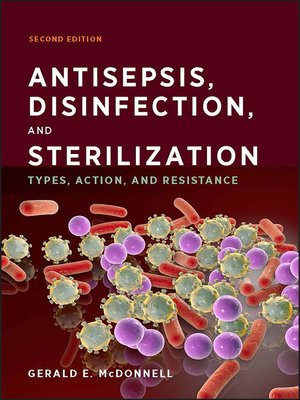Antisepsis, Disinfection, and Sterilization
ebook ∣ Types, Action, and Resistance · ASM Books
By Gerald E. McDonnell

Sign up to save your library
With an OverDrive account, you can save your favorite libraries for at-a-glance information about availability. Find out more about OverDrive accounts.
Find this title in Libby, the library reading app by OverDrive.



Search for a digital library with this title
Title found at these libraries:
| Library Name | Distance |
|---|---|
| Loading... |
Antisepsis, Disinfection, and Sterilization: Types, Action, and Resistance, by Gerald E. McDonnell, is a detailed and accessible presentation of the current methods of microbial control. Each major category, such as physical disinfection methods, is given a chapter, in which theory, spectrum of activity, advantages, disadvantages, and modes of action of the methods are thoroughly and clearly presented. Sufficient background on the life cycles and general anatomy of microorganisms is provided so that the reader who is new to microbiology will better appreciate how physical and chemical biocides work their magic on microbes. Other topics in the book include:
The second edition of Antisepsis, Disinfection, and Sterilization: Types, Action, and Resistance is well suited as a textbook and is outstanding as a reference book for facilities managers and application engineers in manufacturing plants, hospitals, and food production facilities. It is also essential for public health officials, healthcare professionals, and infection control practitioners.







